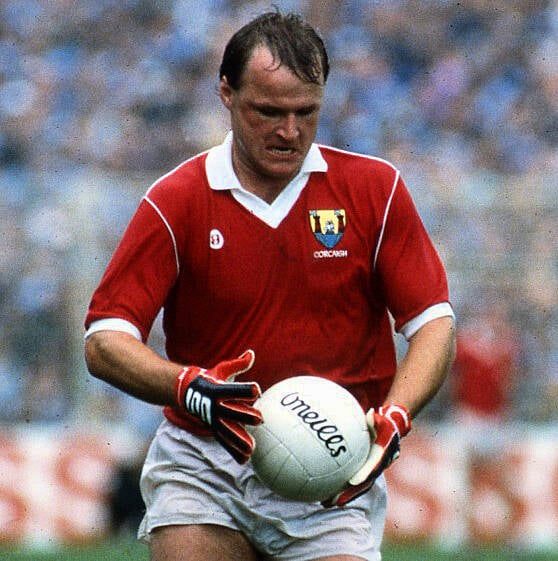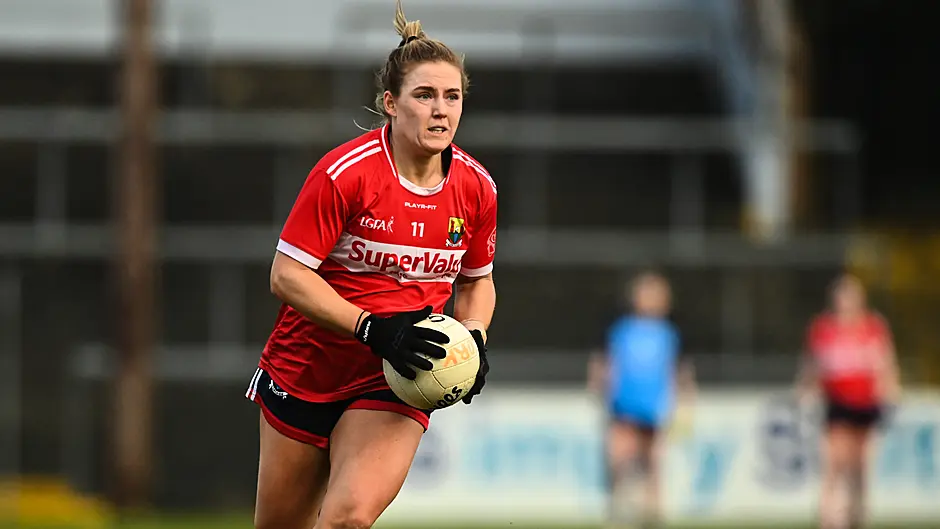TOM LYONS explains why Cork has such a rich history – and affection – with dual players
WHEN Michael Cusack founded the GAA in 1884, his primary aims were the restoration of the ancient game of hurling and to get the control of Irish athletics into Irish hands.
He succeeded admirably in both aims but the development of Gaelic football into the primary field sport in Ireland was in many ways accidental.
There was no game called Gaelic football and it had to be invented by the GAA founders from a mixum-gatherum of the various football codes that were to be found around the country.
What was probably surprising was that this new football game, known at the beginning as ‘The Rules,’ was to become much more popular than hurling in many regions. The reasons for that are varied but what soon became clear was that in many areas, it was the same young men who were trying their hand at both hurling and the new football game.
Here in Cork, more than in most counties, it was accepted that most hurlers would play football as well, and vice versa. An exception was here in West Cork where the new football game became very popular from 1887 onwards but no hurling was played until after the turn of the century. The fact that many of the present GAA clubs in the west of Carbery still do not play hurling after 120 years is little short of amazing and a strong indictment on those in high authority charged with the development of both games equally.
So, from the very beginning it was not a case of dual stars, just dual players who thought nothing of playing both codes at the same time. That some of those players would be equally good at both codes, some outstanding at both, was not a matter for adulation, just being taken for granted. Maybe it was easier to be a dual player in those bygone days as games were few and far between and training was much less frequent and less serious.
When writing the history of Clonakilty GAA Club, we came across a number of outstanding dual players, men like John ‘Count’ Donovan, who won an All-Ireland senior football medal with Cork in 1911 and was an outstanding hurler on the successful Clon team of that era. To compound matters, he was also a hockey player of international standard. Then there was the legendary Big Jim Hurley who played hurling with the mighty Rockies, becoming one of the greatest Cork hurlers of all time, as well as winning county football medals with Clonakilty and a Munster senior football medal with Cork in 1928.
The legendary Tadhgo Crowley led Cork to the All-Ireland senior football title in 1945, having already won a minor hurling All-Ireland in 1939 and was hunted by Jim ‘Tough’ Barry to play senior hurling with Cork. Thankfully, for Clon and Cork, he decided to stick with football, leading Clon to three successive county titles. The Clonakilty players who soldiered with him during Clon’s golden era in the 1940s, winning seven county titles, also captured six West Cork junior hurling titles during those years. On one famous Sunday in 1946, they beat great rivals, Fermoy, in a replayed Kelleher Shield football final in the Showgrounds in Clon and immediately afterwards travelled to Dunmanway where they hammered Skibbereen in the South West hurling final. One could now look on Newcestown as the present bearers of the honour of being West Cork’s greatest dual club but could you imagine them even attempting to do what those Clon dual players did?
As regards the inter-county scene, other counties have produced great dual players down the years but none ever produced as many as Cork or of such a high standard as Cork. Much of the credit for this must go to the great city clubs. Whereas Dublin did produce winning teams in both codes and we recall players like Des Foley for their heroics in both codes, their hurling exploits never matched their football. Maybe the same could be said in reverse of Cork where hurling became the dominant code but down the years the city clubs have produced champion teams of the highest standards in both codes.
 The late Teddy McCarthy won the famous double in 1990.
The late Teddy McCarthy won the famous double in 1990.
Think of St Finbarr’s in both codes, of the Rockies and the Glen in hurling and of Nemo in football. It was only natural that these clubs would produce players who were equally adept in both codes, good enough to play on both Cork teams at the same time and become dual stars for the Rebels. None more so than the late, lamented Teddy McCarthy of Sars and Glanmire, the only player in the history of the GAA to win both football and hurling senior medals in the same year, even though Denis Walsh also came very close in 1990.
What becomes fairly obvious on looking at the names of our greatest dual stars in Cork is that most were, in fact, hurlers who also dabbled, fairly successfully, in football. Top of the list must be the real Taoiseach, Jack Lynch, the only player ever to win six All-Ireland senior medals in a row, 1941 to 1946. A legendary hurler with the Glen, he turned his attention to football in 1945 when the Cork hurlers were knocked out and won his fifth in a row. Ray Cummins won fame with the great Cork hurling team of the late 1970s but turned his attention to football and his lanky frame made him a feared full forward. Denis Coughlan, a Cork and Glen legend on the hurling field, turned his attention to the big ball, captaining Cork and scoring ten points against Kerry in a Munster final. Hard to top that one.
Maybe it’s because it takes exceptionally skilful players to become great hurlers that they are readily able to transfer those skills to football. The opposite doesn’t seem to be the case too often and how many great Cork footballers actually went on to become successful Cork hurlers? Definitely very few West Cork footballers made the jump across. Some say the great Declan Barron was an outstanding underage hurler but never took it seriously afterwards, while Kevin Kehily was good enough in both to play for Cork but concentrated on football. Clon’s Dave McCarthy, All-Ireland football winner in 1973, was one of the best hurlers in West Cork in those years. There were exceptions of course. Cork dual legend Jimmy Barry Murphy, made his reputation as a Cork football star before taking to hurling, giving up inter-county football eventually in favour of hurling. Likewise, Brian Murphy became something of a rarity, a great Nemo footballer who also managed to become a great Cork hurler.
 Dual legends Briege Corkery, left, and Rena Buckley both won 18 All-Ireland senior medals each.
Dual legends Briege Corkery, left, and Rena Buckley both won 18 All-Ireland senior medals each.
There can be no disputing that the deeds of the many dual Cork stars down the years led to the great successes of the Rebel teams and left us with a host of marvellous memories because there was always something special and exciting about dual players who made a success of both codes. All the more reason why Eamonn Ryan’s super Rebels captured the imagination and the admiration of all GAA supporters. It wasn’t just their amazing list of triumphs alone, it was the fact that in their midst they had some of the greatest and most successful dual players of all time. Will we ever forget the daring deeds and record-breaking accomplishments of the wonderful Briege Corkery and Rena Buckley, a record-breaking 18 All-Ireland senior medals each.
While the male intercounty dual star is now becoming part of history, regrettably here in Cork especially, it is to the great credit of the ladies that are still producing topclass dual players. What the present-day dual stars, Libby Coppinger, Hannah Looney, Orlaith Cahalane and Aoife Healy are going through to perform at the highest level in both codes may seem crazy to some, like dashing from Cork to Galway to play both codes on the same day, but they are preserving a legacy here in Cork that is part and parcel of our great GAA history but is now proving beyond their male counterparts.
These women should be encouraged and applauded at every possible opportunity, instead of being hindered and having obstacles put in their way, as seems to be happening in both organisations.
This is shameful treatment of these heroic players and it is a pity the Cork County Board, the male board, is so quiet on the issue. The males may have given up the ghost because of the enormous pressure in doing well in even one code, but the ladies are still carrying the torch and more power to them. Long may they continue to do so.










